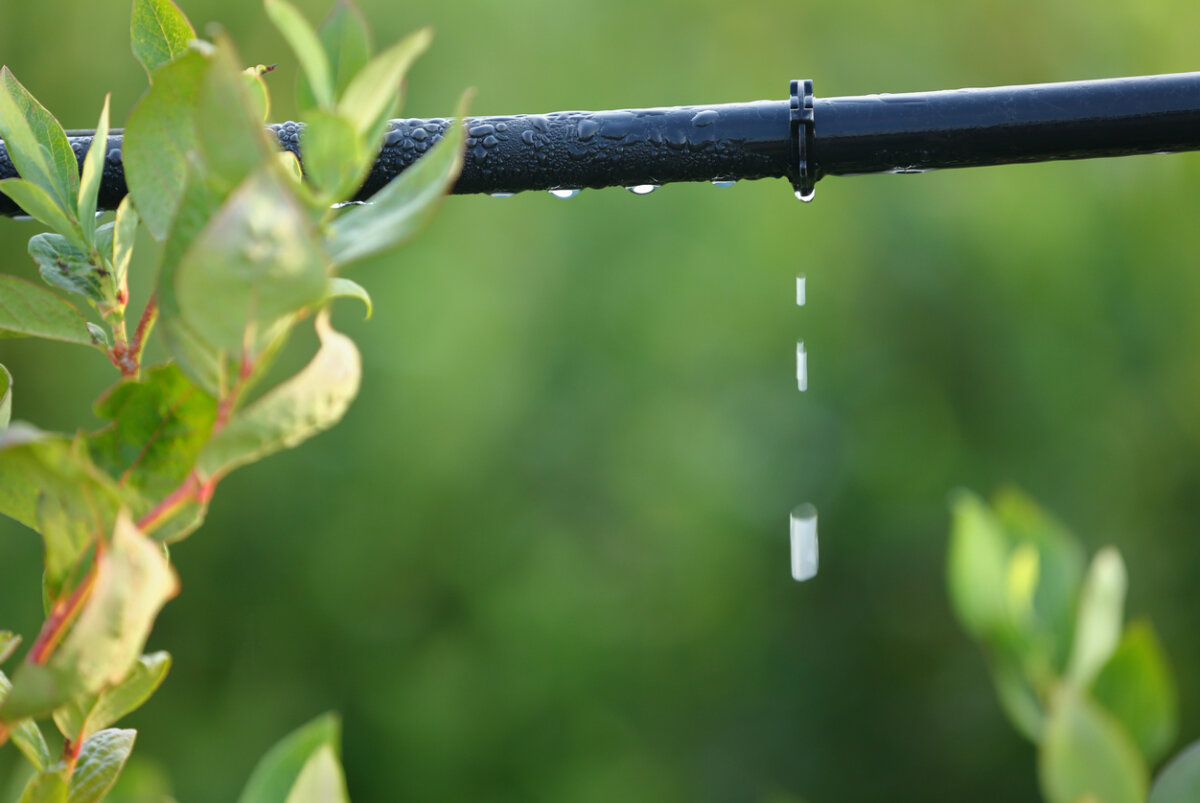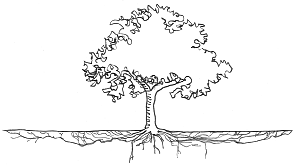
Trees need water in summer to help them survive and thrive. Water slowly so the water penetrates deeply into the entire root zone.
Many of us expect that our trees will be fine all summer without any additional water. However, this turns out not to be true, especially as our summers get hotter and drier.
In recent years we have seen more signs of drought stress in our clients’ trees. Unlike smaller landscape plants, the effects of drought stress may take a few years to appear in trees. Lack of water may eventually kill the tree.
What this means is that we usually must water in our dry months, even if we think the trees are ok. They may look fine right now, but the following years is when the damage will show.
Why to water your trees
Trees that are stressed have more pest problems.
When plants begin to have water stress issues, they often emit destress signals that many damaging insects pick up on. This is why one tree that is healthy and fine can be right next to a tree struggling, and the struggling tree is ravaged by pests.
Many of our pest problems are water associated. Outbreaks and infestations of aphids, spider mites and lace bugs are all directly related to whether the plant has the moisture it needs to survive and thrive.
Drought kills trees when the plant loses more water through its leaves or needles than it can replace from the soil with its root system. Without enough water, trees cannot make food by photosynthesis.
When this begins to happen, the tree will send out chemical signals to pests so the pests can come in and finish the job. In nature, the weak die and only the strong survive.
Trees have many benefits.
Trees are a beautiful asset in your landscape. They provide structure or framework for your landscape. Many trees provide seasonal interest, with spring flowers and/or fall color. Evergreen trees provide visual interest in winter when many other plants have died back. Trees improve your home’s street appeal and property value.
Trees are also important in our urban environment. They provide shade on hot days, provide shelter and food for wildlife, reduce stormwater runoff, help keep the water clean and clean the air of toxins.
It costs a lot to remove and replace a dead tree.
We understand that you may be reluctant to spend money to water your trees. But if your tree dies, you will need to spend a lot of money to have it removed, and more money to replace it. And you will have to wait many years for the new tree to have a large presence in your yard.
When to water your trees
The easiest way to know when your trees need water is to check soil moisture. A soil probe allows you to measure how deeply the water has penetrated. This will let you know whether you are reaching deep enough into the root zone to encourage your plants to grow deep roots. If you don’t have a soil probe, you can use a long screwdriver, at least eight inches long.
Just poke the probe or screwdriver into the soil. It will pass easily into moist soil, but be difficult to push into dry soil. If you can’t poke it in at least six inches, it’s time to water. This technique works best in clay and loam soils.
Watch our short video “Watering 101: Create Strong and Healthy Plants.” It explains how and why to water deeply. Watering deeply is key to healthy plants. Start at 1:08 for instructions on how to use a soil probe.
How to water your trees
When you water your trees, shrubs or other plants, do it correctly. You need to maximize the water penetration in the soil and minimize the amount of evaporation. Evaporation wastes water; it cannot get into the soil and help the tree.

A tree’s roots are relatively shallow (three feet or less deep), and most roots are within 12 inches of the surface. Roots extend well past the canopy drip line. Illustration: University of Minnesota Extension.
Water the entire root zone area, and then let it partially dry out.
The active root zone can be a large area: for most plants it is at the outer tips of the leaves and beyond. It will not help the tree if you water nearer the trunk. No root tips are there bringing in moisture for the plant. So make sure you water the entire root zone area of the plant.
One way to water a tree is with a soaker hose. Wrap the hose in a spiral around the tree, starting outside the tree’s drip line. Turn the hose on, and let the water soak into the soil. You want the water to penetrate six to 10 inches into the soil; check it with a soil probe or screwdriver. This can take a few hours, depending on how large the tree is and how dry the soil is.
Then allow the area to dry out partially. No roots want to be waterlogged all the time. The roots need oxygen. This happens when the soil is allowed to dry out some between waterings.
Water slowly and deeply for healthy plants.
You need to water long enough for the water to penetrate deep into the soil. Watering deeply encourages deep roots that help a tree resist drought stress. Tree roots may be as deep as 10 inches below the soil surface. Avoid light watering; this promotes shallow root systems that are susceptible to summer heat and drought stress.
Your irrigation system probably doesn’t provide enough water to soak in deeply. Use a soaker hose or drip line to water the tree because it is sits directly on the soil surface and will water it slowly. It may take a few hours for the water to penetrate deep into the soil. Check the soil periodically with a soil probe or screwdriver to see how deeply the water has soaked in.
If your soil is already dry, it may take a few waterings to “soften” up the top of the soil layer, allowing water to penetrate deeper into the soil profile. Soil is like a sponge. If a sponge is allowed to dry out completely, you cannot just pour water quickly onto its top. The water will run off and not penetrate at all. But if you slowly pour the water on the sponge and allow it to soften up the surface, then the additional water will freely percolate through the rest of the sponge.
Water when it is cool.
If you water in the heat of the day, most of the water will evaporate into the air before it has a chance to get to the soil. Mornings are the best time to water, the earlier the better. Evening is the second choice. Be aware that if you regularly water in the evening, it can promote some diseases.
Mulch is helpful.
A thick layer of mulch (at least a few inches) will help your tree retain water. It also keeps the soil cooler. To prevent rot, don’t pile mulch directly against the tree trunk; keep it at least a hand’s width away.
If your tree is in your lawn, mulch is also helpful to prevent the lawn from competing with the tree for water, nutrients and root space. According to University of Minnesota Extension, “Turf wins because its dense fibrous root system prevents woody plants from producing water-absorbing roots in the top few inches of soil. As a result, woody plants grow more slowly in turf areas than in mulched or bare soil areas.”
How to water newly planted trees
If you planted any trees this year, or within the last two years, a watering bag is a convenient way to water your trees slowly and deeply. Watch our video on Tree Gators for details.
Save the trees!
If you follow these simple tips, your trees will get the water they need to thrive. You will help the urban forest stay healthy. And you will sleep safe and sound knowing you are doing your part to keep our trees happy, healthy and growing for the next generation.
More info
- Watering established trees and shrubs, University of Minnesota Extension
- Tree watering, Sacramento Tree Foundation
- How often should you water your trees?, Arbor Hill Trees
- Tree care: when to water, Gardeners Supply Company
- Summer tree watering guide: how much and how often to water your trees, J.C. Tree Care
- How to water trees, Wikihow
- How to properly water your trees, Arbor Day Foundation
